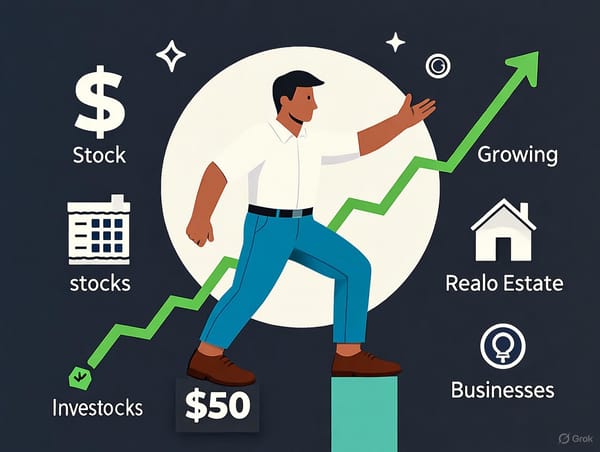Emotional Resilience
Emotional resilience empowers you to navigate life's challenges with clarity and strength, transforming setbacks into opportunities while effectively managing your time, energy, and money.

In a world of constant demands and unexpected challenges, emotional resilience is your anchor. It’s the ability to adapt to stress, bounce back from setbacks, and thrive while managing your time, energy, and money. By cultivating gratitude, reframing challenges, and handling stress effectively, you can build a foundation of emotional strength that supports every aspect of your life. This article offers practical tools to foster resilience and create a balanced, fulfilling life.
What Is Emotional Resilience?
Emotional resilience is the capacity to navigate stress, adversity, or change while maintaining mental and emotional well-being. Resilient people don’t just survive challenges—they grow stronger, emerging with clarity and wisdom.
Key Elements of Resilience:
- Self-Awareness: Recognize your emotions and triggers to respond thoughtfully, not impulsively.
- Adaptability: Adjust your approach to new circumstances with flexibility.
- Realistic Optimism: Stay hopeful and solution-focused while grounded in reality.
These elements empower you to handle life’s ups and downs while preserving the energy needed to manage your resources effectively.
Mindset Shifts: Gratitude and Positive Reframing
A resilient mindset transforms how you face challenges and manage resources. Two powerful tools—gratitude and positive reframing—can rewire your perspective for strength and clarity.
Gratitude: Finding Abundance in Any Moment
Gratitude shifts your focus from scarcity to abundance, counteracting the brain’s “negativity bias” and fostering emotional stability. A 2024 study in Frontiers in Psychology found that daily gratitude practices reduced stress by 23%, boosting mood and clarity.
How to Practice Gratitude:
- Gratitude Journal: Write down three things you’re thankful for daily, like a kind word from a colleague or a sunny morning.
- Express Appreciation: Tell a friend or coworker you value them to deepen connections.
- Mindful Pause: Notice small joys, like a warm meal or a quiet moment.
Example: When Maria’s car broke down, she felt overwhelmed. By journaling about her gratitude for a supportive friend who offered a ride, she regained perspective and tackled the repair calmly.
Positive Reframing: Turning Challenges into Opportunities
Positive reframing helps you see setbacks as growth opportunities without ignoring reality. This mindset preserves emotional energy and inspires action.
Reframing Techniques:
- Ask Empowering Questions: Replace “Why me?” with “What can I learn?” or “How can I grow?”
- Focus on Control: Identify actionable steps in tough situations to shift from helplessness to empowerment.
- Find the Silver Lining: Look for lessons or opportunities, like new skills or connections.
Example: When Alex lost his job, he reframed it as a chance to explore freelance work, using his free time to build a portfolio. This shift turned despair into motivation.
By practicing gratitude and reframing, you build a mental reservoir that supports thoughtful resource management.
Managing Stress to Protect Your Resources
Chronic stress drains your emotional, physical, and mental resources, making it harder to manage time and money. Resilience involves handling stress proactively to maintain clarity and focus.
The Impact of Stress
Stress clouds decision-making, leading to overspending, procrastination, or impulsive choices. For example, stress might push you to buy unnecessary items for comfort or neglect a budget. Managing stress preserves your resources for intentional choices.
Stress Management Strategies
- Mindfulness: Practice five minutes of deep breathing or use apps like Headspace to calm your mind.
- Exercise: A brisk walk or yoga session releases endorphins, reducing stress and boosting energy.
- Set Boundaries: Say no to non-essential tasks to protect your time and energy.
- Connect: Lean on friends, family, or a therapist for support. Strong relationships are a cornerstone of resilience.
Example: When Priya felt overwhelmed by work deadlines, she took a 10-minute walk and called a friend to vent. This restored her focus, helping her prioritize tasks without wasting time.
Resilience and Resource Management
Emotional resilience enhances how you manage time, energy, and money, leading to smarter decisions and less burnout.
Time Management
Resilience helps you prioritize tasks under pressure. Reframing a busy day as a chance to practice efficiency can make your schedule feel manageable.
Tip: Use time-blocking to allocate specific hours for work, self-care, and rest. Stick to your plan to stay focused.
Energy Management
Gratitude and reframing reduce the emotional toll of stress, conserving energy for meaningful tasks. Balance high-energy tasks with recharging activities like hobbies or time with loved ones.
Tip: Schedule demanding tasks during your peak productivity hours to maximize efficiency.
Money Management
Resilience fosters clarity in financial decisions, reducing impulsive spending and supporting long-term goals. Gratitude keeps you grounded, preventing stress-driven purchases.
Tip: Create a budget aligned with your values. Set aside a small emergency fund to ease financial anxiety.
Example: When Jamal faced unexpected medical bills, his resilience practices helped him stay calm. He reviewed his budget, cut non-essential spending, and felt empowered to manage the crisis.
Building a Resilient Life
Emotional resilience is a skill that grows with practice. Start small, reflect regularly, and lean on supportive people to stay motivated.
Steps to Start:
- Choose one practice, like a five-minute meditation or gratitude journaling, and commit for a week.
- Reflect weekly on what worked and adjust your approach.
- Surround yourself with uplifting people, like a community group or coach.
The Long-Term Benefits:
Resilience empowers you to handle setbacks, make thoughtful decisions, and live with purpose. It also strengthens relationships, as your calm and solution-focused approach inspires others.
Conclusion
Emotional resilience is your key to thriving in an unpredictable world. By embracing gratitude, reframing challenges, and managing stress, you can navigate life’s complexities while making the most of your time, energy, and money. Imagine facing setbacks with unshakable calm, managing your resources with confidence, and growing stronger through every challenge. Start today: write down one thing you’re grateful for or reframe one challenge as a growth opportunity. These small steps build a resilient, empowered you.





